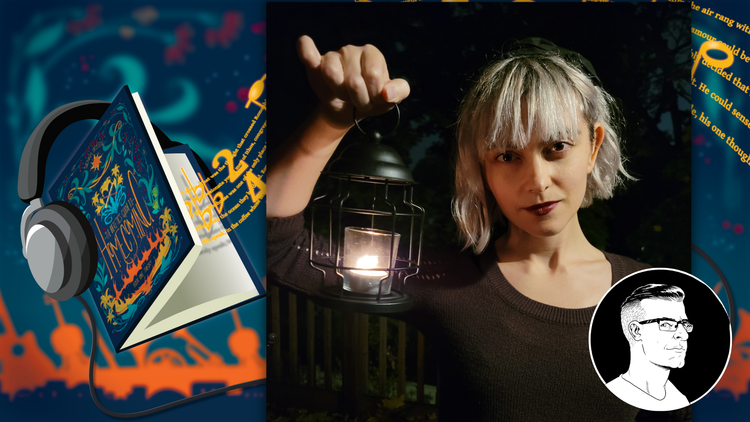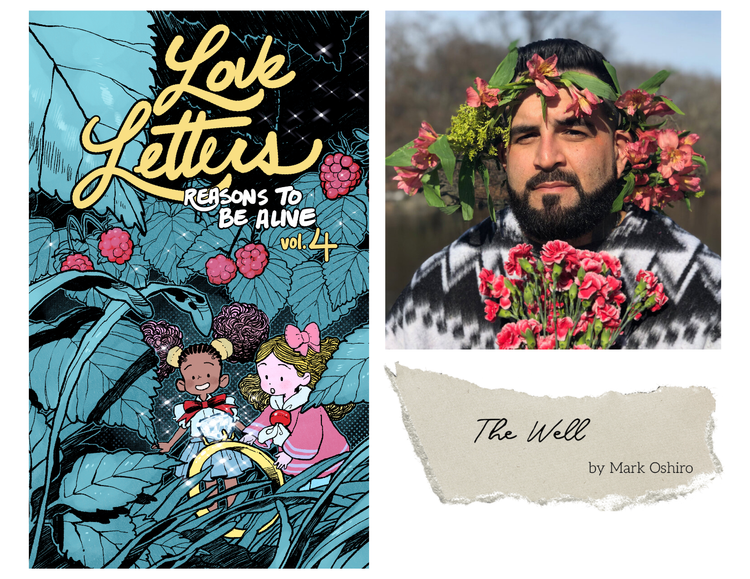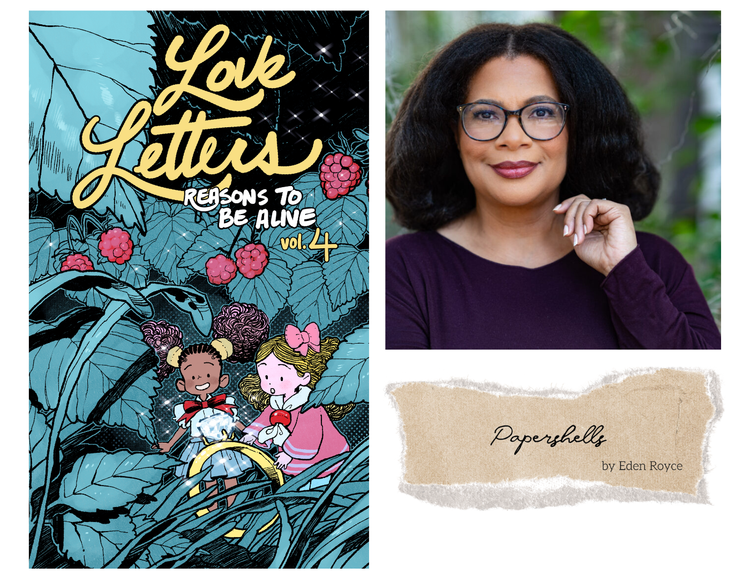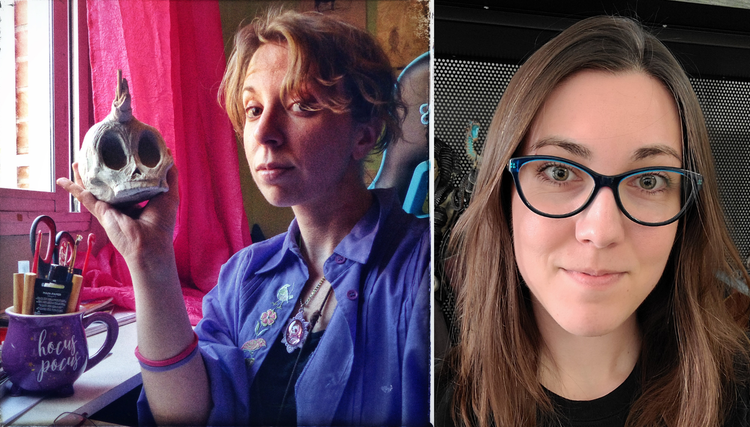Exclusive: Dominique Dickey of Plant Girl Game
Plant Girl Game is a cozy tabletop roleplaying game about a family of plant children working together to prevent an ecological disaster. Your mother’s garden is crowded with succulents and sometimes—when the timing is just right, when your whole family is ready—one of those succulents emerges from the garden as a human child. This is how you came to be. You’re tied to the land, to the soil and the water that fed you. Any threat to your town’s ecosystem is a threat to your family’s way of life—and your town is on the brink of ecological disaster. Your family must work together to protect yourselves and your community at large.
I had the immense pleasure of writing a starter scenario for Plant Girl Game! When creator Dominique Dickey first reached out to me about working on the game, I was immediately charmed by the concept. The more I learned, the more I loved: this game is about building, participating in, and caring for a community in ways that extend into the ecosystem the community inhabits. I got the chance to chat with Dominique about game design, ecosystems, and childhood.
Dominique Dickey is a writer, editor, cultural consultant, and Nebula Award Winning RPG hooligan. In addition to creating TRIAL, a narrative courtroom tabletop roleplaying game about race in the criminal justice system, and co-creating Tomorrow on Revelation III, a tabletop roleplaying game about surviving and building community on a hyper-capitalist space station, Dominique has written for Thirsty Sword Lesbians, Dungeons & Dragons, and Sea of Legends. They work as a designer and editor at Monte Cook Games. Their fiction has appeared in Anathema Magazine and Fantasy Magazine. You can find them on Twitter @DomSDickey or at dominiquedickey.com.
Plant Girl Game builds lots of layers onto the players’ interactions with the world – from family and friends, to neighbors and community members, to the local economy and ecosystems. What made you decide to work in so many levels at once?
Giving characters lots of levels on which to engage broadens storytelling potential—there’s the immediate conflict of preventing ecological disaster, but no disaster happens in a vacuum. I wanted to give players room to enact lots of character-focused subplots by roleplaying interactions with relatives, peers, and townspeople with differing levels of authority. A given session of Plant Girl Game may be about damming a flood, but it’s also about how that flood impacts people around you, and how your loved ones can support you and be supported by you in turn.
The character age range for this game is young, ranging from 11 years old and up. What makes a child or adolescent’s perspective on community unique?
Children often think of very simple solutions to complex problems, because they’re more immersed in how the world should work than how it actually functions. Adolescents tend to run face first into that complexity: I remember at the age of fifteen or so, going from “Well, why can’t we just fix climate change?” to “A lot of very powerful people are invested in maintaining the status quo, and we have a narrow window of time in which to break that status quo, and it won’t be easy to do so.” I was absolutely enraged, because the childish part of me was still unable to conceptualize cruelty on a larger scale than playground bullies or mean girls in the locker room. I had a child’s expansive empathy, and wasn’t able to understand why anyone would lack that empathy.
Which is a roundabout way of saying that I want players to face that tension. I want players to begin a session of Plant Girl Game with the childlike knowledge that the world should be a kinder, fairer place, and leave with the adolescent realization that if we want that world—for ourselves and for our loved ones—we’re going to have to fight like hell for it.
Characterization in this game is based on varieties of succulent. How does this framework ground characters in their local ecosystem?
I love this question because the characters being plants is largely for flavor—it gives the game a distinct vibe, but it has very little impact on the actual mechanics behind gameplay. It was important for me to make each character a distinct type of plant, though, because this ties them more directly to the environment. If the ecosystem collapses, it could very well take the characters down with it. This means that players can’t look away from the looming environmental disaster, which keeps gameplay ultimately focused on how to tackle the problem at hand, even as the characters go about their daily lives.
Ecological disaster has a tendency to invite cascading problems and incomplete solutions. What kind of gameplay experience do you hope players will have as their characters attempt to navigate the difficult task of protecting their community?
Players select which ecological disaster they want to tackle as part of the initial worldbuilding phase of gameplay. This choice can determine the length of a campaign: some disasters can be resolved in a single session, while others have far-reaching consequences. In the case of longer campaigns, I hope players really delve into that complexity, considering the long-term implications of their initial solutions.
The game presents an imminent ecological disaster that players are connected to, rather than putting players in a position to completely prevent or simply ignore ecological calamity. How do you hope Plant Girl Game will connect players to their own ecosystems and the world around them?
I hope that players realize that, even though you may not have literally emerged from a garden, you’re just as connected to the future of this planet. We’re currently facing so many disasters that we can’t prevent and that we shouldn’t ignore, but that we can do our damndest to mitigate or minimize. Ecological collapse threatens all of us, and I encourage you to get involved with organizations working on those complex solutions in your area!
Plant Girl Game is uniquely focused on family dynamics, without reinforcing nuclear family ideals. What does family mean in the world of this game, and how is ‘family’ different from ‘community’?
As a child, family is who you’re stuck with. Ideally, they are people you love, and who love you, but you may not have chosen to interact with them in other circumstances. The family in Plant Girl Game is imperfect, because I find that dynamic really narratively compelling. The family and worldbuilding sections of Plant Girl Game specify that your mom is a good mom—how that is defined is up to the players, but she is overarchingly supportive even though there will be moments of conflict. And so are your siblings!
While a family may come together by happenstance, a community is deliberately built and maintained. I see characters in Plant Girl Game learning to not just get along with, but help each other thrive within their imperfect family. At the same time, they are learning to be good stewards of their broader community and defining what that means for them. Not everyone in their town might be in their community, and they may need to work to generate a sense of community at all. So in the game, family is learning to thrive within an existing togetherness, and community is building that togetherness in a way that helps the whole group thrive.
The Plant Girl Game funding campaign is live now! The rest of the Plant Girl Game team includes project manager and developmental editor C. J. Linton, graphic and layout designer Vee Hendro, illustrator Sarah Aziz, cultural consultant Bee Zelda, and copyeditor Samson J. L. Soulsby, along with two starter scenarios, one by yours truly and one by the amazing C. L. Polk. I hope you’ll consider funding this game about building a kinder, cozier world. If you would like to preview Plant Girl Game before you decide to pledge, you can find a preview playkit for free on itch!
In the meantime, care for yourself and the people around you. Believe that the world can be better than it is now. Never give up.
—Gailey






Member discussion